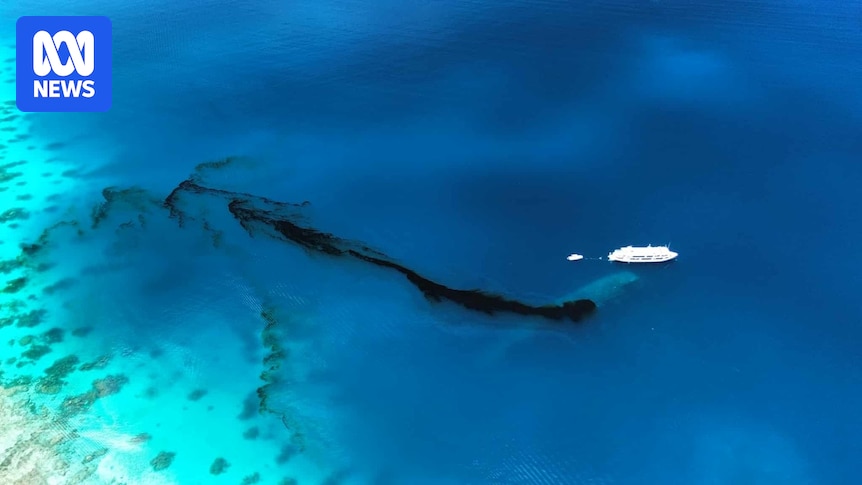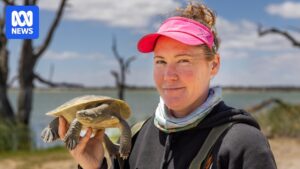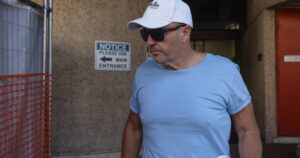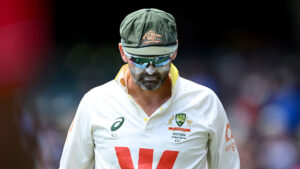
Swimming amid the shipwrecks of Micronesia’s Chuuk Lagoon is akin to diving into a time machine. A ghost fleet of ships and aircraft, once part of a formidable Japanese naval base, now dots the floor of Chuuk’s shallow waters. This underwater graveyard, teeming with coral and marine life, attracts adventurous tourists from around the world. However, Chuuk’s major tourism attraction is also a looming environmental threat.
Toxic oil is leaking from these rusting vessels, and experts fear that climate change is accelerating their deterioration. Warmer water temperatures and increased wave action from extreme weather are corroding the ships’ outer shells. Concerns escalated last month when oil from an old transport ship reached the shores of nearby villages, turning mangroves black and prompting a state of emergency. This incident is just the beginning of a potentially larger crisis.
World’s Largest Shipwreck Graveyard
Ranger Walter, the historic preservation officer in Chuuk, often swims among the wrecks. “When I started diving, I became addicted. It’s like another world,” he said. His role involves ensuring that the relics and artifacts remain undisturbed. “We keep inventory to make sure tourists don’t pick up old guns and things like that,” he added.
More than 4,000 Japanese soldiers perished when Chuuk Lagoon, known as “Truk” at the time, was bombarded by US forces during World War II. Over 60 vessels were sunk, along with hundreds of planes, in an attack described as “revenge for Pearl Harbor.” Before that, the base had been a hub for Japan’s logistics operations in the central Pacific. By 1944, it was isolated from retreating Japanese forces, making the ships easy targets for Allied bombers.
Today, Chuuk Lagoon is home to one of the highest concentrations of World War II shipwrecks globally, making it a bucket-list destination for scuba divers. Chuuk’s division chief of commerce and industry, Peter Aten, noted that the shipwrecks are the main driver of tourism for Micronesia.
A Ticking Time Bomb
Problems became apparent in the early 2000s when local fishermen began finding traces of oil on the lagoon’s surface. Soon after, a strong storm washed oil ashore, prompting an international call for aid from the then-leader Manny Mori, who labeled the wrecks a “ticking time bomb.”
Japan’s Mine Action Service has been involved in extracting oil from the lagoon since 2017, removing 60,000 liters so far. However, this effort only scratches the surface, with estimates suggesting up to 22 million liters could still be contained within the vessels. In February, the Australian government funded an extensive study of the wrecks at Micronesia’s request. Maritime archaeologist Matt Carter led the study, assessing 20 high-risk wrecks using 3D modeling software.
“Some were sunk upright, some were blown in half, some are upside down, and that all plays into how they will deteriorate,” Carter explained. “If a wreck is on its side, all the forces are vertical, and it’s not built to withstand those forces.”
The study concluded that 15 wrecks need cleaning within five to ten years to prevent a large-scale spill. However, just months after the study, disaster struck when the Rio de Janeiro Maru leaked oil, leaving a 10-centimeter-thick layer on a nearby village’s shoreline.
“Fortunately, the affected villages use rainwater, so there’s no contamination of their local water, but there have been reported cases of dizziness due to the fumes and smell of the oil,” Aten reported.
A Legal Grey Area
A state of emergency was declared, and Micronesian President Wesley Simina raised the issue at the UN General Assembly, stating that the problem’s scale far exceeds Micronesia’s capacity to address it alone. However, securing international assistance is complex.
According to Carter, removing oil from shipwrecks and disposing of it safely is common elsewhere but costly. Cleaning up a single wreck in Chuuk could cost upwards of $10 million. “The challenge in places like Chuuk, Solomon Islands, and Marshall Islands is the sheer distances involved for getting the equipment there,” he said. “The cost is significantly higher.”
There is also no legal obligation for the countries responsible for the wrecks to assist, according to Donald Rothwell, a maritime expert and professor of international law at the Australian National University. He explained that because Micronesia was not an independent state during WWII, the wrecks’ legal responsibility falls into a grey area. Peace treaties concluded at the war’s end also failed to address potential issues caused by shipwrecks or pollution.
“There’s a growing awareness that this is a problem mainly affecting small island states, and there is a political movement to reach a global settlement. But unfortunately, that will take some time,” Professor Rothwell said.
In the meantime, Chuuk leaders have applied to have the wrecks placed on the UNESCO World Heritage List to raise their profile and shed further light on the issue. “It’s obvious that this is just the beginning,” Aten said. “We have 63 shipwrecks in our lagoon, and it would be devastating if they all start leaking.”






